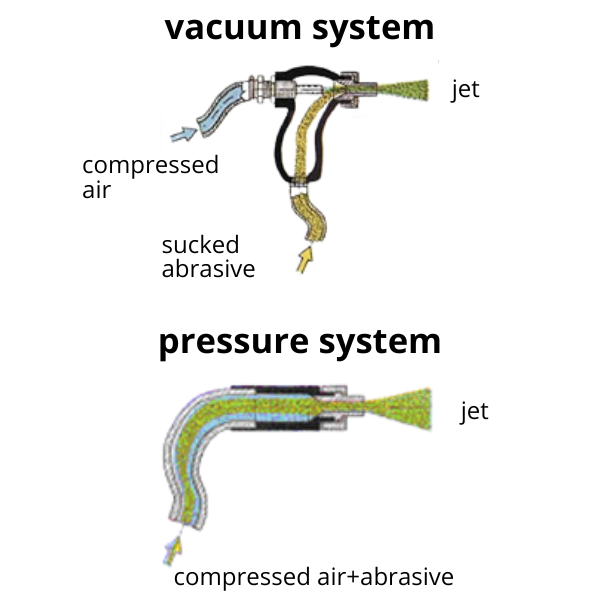The difference between pressure and vacuum systems
Reading time: 1 minutes 50 minutes
When considering the use of sandblasting or shot peening systems to process components or products, we are often faced with the choice between pressure and venturi systems, also known as "vacuum" systems. These two approaches differ significantly in both the machinery and systems used and the results obtained. Therefore, it is essential to be properly informed before making a decision on the type of sandblasting machine best suited to invest, in order to better meet the needs of the industry and the product to be treated.
Sandblasting with vacuum system
Industrial sandblasting machines with vacuum systems exploit the Venturi effect to suck the abrasive towards the sandblasting nozzle. Two distinct tubes converge inside the gun: one for compressed air, which creates a pressure difference using the Venturi effect to shoot the abrasive material at very high speed, and the other for the grit.
Sandblasting with a pressure system
On the other hand, pressure blasting machines operate in a different way, directly pushing the material from the pressure tank towards the product to be treated. Thanks to a specific valve system, both the grit flow and the compressed air pressure can be adjusted, allowing a machining process targeted to the specific needs. This approach ensures greater accuracy and speed than vacuum systems.
Conclusion
The choice between vacuum or pressure blasting machines depends on several factors, such as the size of the products to be treated and the machining requirements. Both types of machines perform the same task but have significant differences in performance and end results.
Pressure blasting machines are ideal for handling larger volumes of material in less time and with greater precision but require more complex handling and higher operating costs. On the other hand, vacuum systems are cheaper, but support a smaller machining range. The choice of the industrial sandblasting machine therefore depends on the specific machining and precision requirements required.









